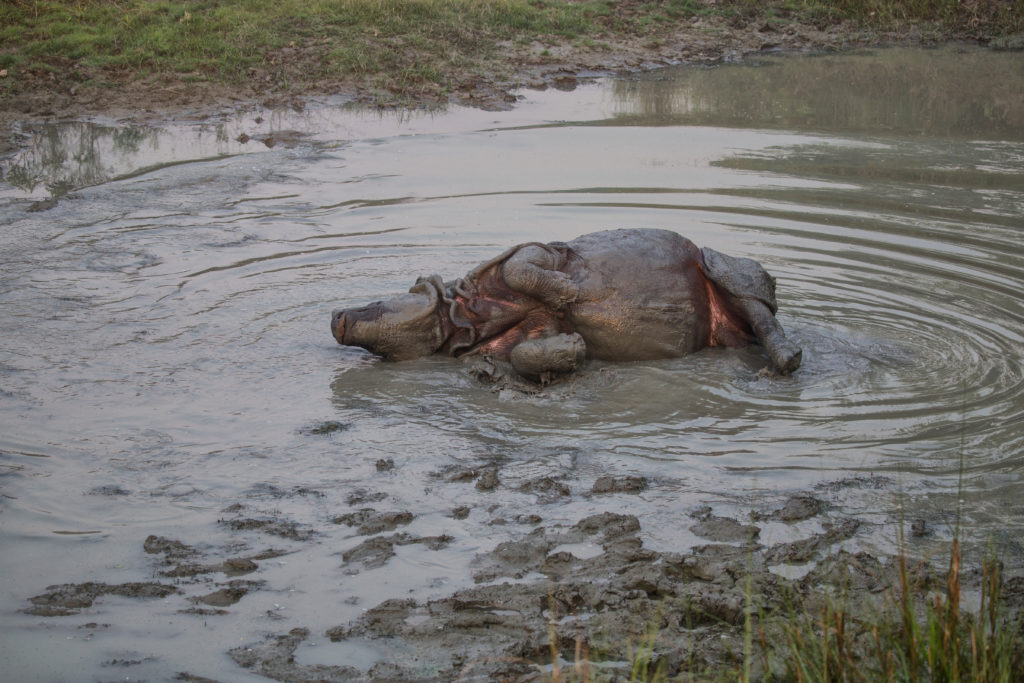Mud, bugs and dung: How rhinos shape their world
As a large-bodied and wide-ranging vegetarian, rhinos play a crucial role in maintaining the landscapes they call home. For this reason, they’re referred to as a “keystone species” and a “landscaper.” While rhinos certainly have an important job, it’s a dirty one — dung, bugs and waterholes are among the tools this hulking herbivore uses to shape its habitat.
A few months ago, I travelled to the forested lowlands of Nepal where I saw first-hand how this at-risk giant is benefitting nature and helping other species thrive.
Promoting regeneration
Rhinos have voracious appetites and can eat more than 50 kilograms of vegetation in one day! Their dung contains a wide variety of seeds, so as rhinos roam far and wide, they help distribute food plants across the landscape that will then be eaten by other herbivores.
For example, the regeneration of a plant species commonly called “rhino apple tree” (Trewia nudiflora) is known to be largely facilitated by rhinos in jungles of Nepal.
Aiding the food chain
In addition to spreading seeds, rhino dung serves as a breeding ground for dung beetles and other insects whose larvae feeds birds and other small animals.
The rhino’s craggy skin is also host to dozens of species of ectoparasites and birds like mynahs are often be seen perched on the backs of rhinos enjoying a nutritious snack. The birds earn their keep by giving alarm calls to alert rhinos to approaching intruders.
Creating water sources
Rhinos spend up to 60 per cent of their time per day wallowing in mud puddles and rivers. In doing so, their big bodies maintain existing waterholes and create new ones. These waterholes then serve as a natural water station for many other species.
As their mud-laden bodies dry off in the grasslands, rhinos from riverbanks and watering holes to surrounding areas, which in turn improves the quality and conditions of vegetation and grassland.
Nepal’s Terai landscape wouldn’t be the same without rhinos. Securing their future is about so much more than just saving an iconic species — by helping this armoured yet vulnerable giant recover, we can also help other species that share its home thrive as well.


